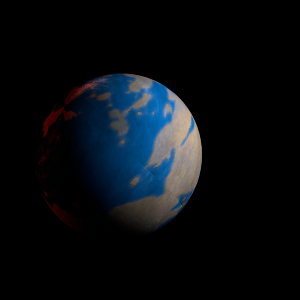|
|
Space Astro
|
Info for exoplanet "Lenephaë"
| Scientific (actual) data |
|---|
| Name | Kepler-541 b |
| Planet status | Confirmed |
| Radius | 0.3 |
| Orbital period | 5.08006 |
| Discovered | 2016 |
| Updated | 2021-02-05 |
| Tconj | 2455010 |
| Publication | Announced on a website |
| Detection type | Primary Transit |
| Alternate names | 2MASS J19363592+3827297 b, K00384.01, KIC 3353050 b, KOI-384 b, KOI-384.01, WISE J193635.91+382729.6 b |
| Star name | Kepler-541 |
| Right ascension | 294.15° |
| Declination | 38.46° |
| Mag j | 12.079 |
| Mag h | 11.814 |
| Mag k | 11.733 |
| Star distance | 1020 |
| Star metallicity | 0.07 |
| Star mass | 1.41 |
| Star radius | 2.06 |
| Star age | 3.09 |
| Star temperature | 6166 |
| Star alternate names | 2MASS J19363592+3827297, KIC 3353050, KOI-384, WISE J193635.91+382729.6 |
| Wikipedia article | Kepler-541 b |
Back
| |
| Fictional info (?) |
|---|
| Suggested name | Lenephaë |
| Planet type | Cold planet |
| It has the longest rotation period (445 days) of any planet in its solar system and rotates in the opposite direction to most other planets. |
| Atmosphere | Oxygen | 77% |
| Nitrogen | 21% |
| Argon | 1.6% |
| Ammonia | 3.9E-5% |
| Ozone | 3.0E-5% |
| Atmospheric pressure | 40 bar |
 |
| Moon | Nemir-aracali | Large almost round oceanic asteroid |
| Google search for Lenephaë |
|
Website by Joachim Michaelis
|
|
|
|